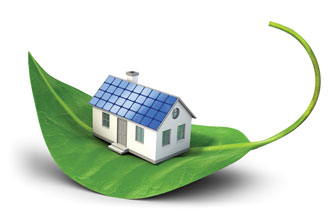Two Builders Discuss the Future of Eco-Friendly Construction
We have, in part, the energy crisis of the 1970s to thank for many of the green building practices currently in our collective toolboxes. Certainly the 1970s can be credited with supplying the motivation to find ways of reducing our reliance on fossil fuels.
Today we’re seeing builders, designers, and manufacturers across Canada take green to a new level. In fact, it could even be said that we’re at the beginning of an eco-friendly construction movement, one that goes beyond energy efficiency within the building envelope to incorporate features such as solar panels, geothermal, water conservation and renewable materials — all while reducing the amount of building materials going into landfill.
There are also a number of green building programs available, among them such industry standards as R-2000, Built Green, LEED for Homes and ENERGY STAR for New Homes. But any ‘green’ builder will tell you it’s not just about the program. Rather, it’s a philosophy that permeates all aspects of their business.
We asked two finalists of the 2010 SAM Green Home Award to share their thoughts on eco-friendly construction. Representing Russell, Ontario, a small community southeast of Ottawa, is second-generation, small volume home builder, John Corvinelli, president and owner of Corvinelli Homes Ltd. Representing Garibaldi Highlands, British Columbia, a community just north of Squamish alongside the Sea to Sky Highway, is Richard Lutz AIOC, president of Alpine Timberframe & Design, a custom home builder and supplier/fabricator of timber structures.
Demographically, the age of a home buyer has not proven to be a deciding factor in buying green; rather, it comes down to the need to facilitate the education, promotion and informational aspects of energy efficient homes to the general public.
“When clients enter the market to purchase a new home, they tend to first look at just the monetary part of the home and use that as a price point comparison,” Corvinelli said. “One challenge is that many Energy Star features are hidden within the envelope of the home, and may not be visible to the naked eye. However, once a client comes into the office, we are able to educate them that while a green home can be slightly more expensive at the outset, the price will be offset by ongoing lower operating costs.”
Another solution is to offer clients energy efficient options. “We provide our clients with simple choices in regards to environmental impact, sustainability, energy efficiency and their relative costs throughout the design and construction of the home,” Lutz said. “They are then able to make educated choices based on their wishes and budget. We do, however, always use products such as low VOC paints and finishes and formaldehyde free products wherever possible. There are so many little things we as builders can do that do not cost any more. Many tout these as green products, but they should actually just be common good practice.”
Continuing education, training and licensing at the builder level and within the trades are equally important. At Alpine Timberframe & Design, for example, employees participate in continuing education through the Built Green program, manufacturers’ workshops, and other initiatives. “When we conduct our own in-house blower door tests, we have our employees and the sub trades all involved by looking for air leakage,” Lutz said. “This turns into a bit of a ‘witch hunt’ and clearly demonstrates the importance of air sealing.”
The Future of Green
So what about the future of green, including legislation? “We simply cannot continue building homes the way we were with regard to energy efficiency and long term durability; the cost of a home to the average Canadian was simply crippling when you factor in heating/cooling costs and the short life expectancy of the building,” Lutz said. “I believe the government has a duty to legislate what many may seem as drastic changes to the building codes. However, with appropriate education it is quite achievable—there are many examples of properly trained, good builders across the country being proactive and taking many of these steps already without any difficulty. Much of this will also force product manufacturers into providing more sustainable and energy efficient products.”
There’s no argument from Corvinelli, who further suggests that green homes should be a standard across Canada. “I strive to build more feasible sustainable green housing for the average homeowner at a budget-friendly cost, in all the homes I build. My ultimate goal is to construct every home to net-zero energy standards by implementing innovative, no maintenance, renewable energy technologies.”
(Article Source: Home Builder Magazine. Read original article here… )
Each Thursday, we will feature a blog entry about energy efficient new homes, covering a range of topics from building innovations to ratings systems to “score” your home’s efficiency. Subscribe to the DrummondHousePlans blog to make sure you get the latest news on how to make your new or renovated home energy efficient.

